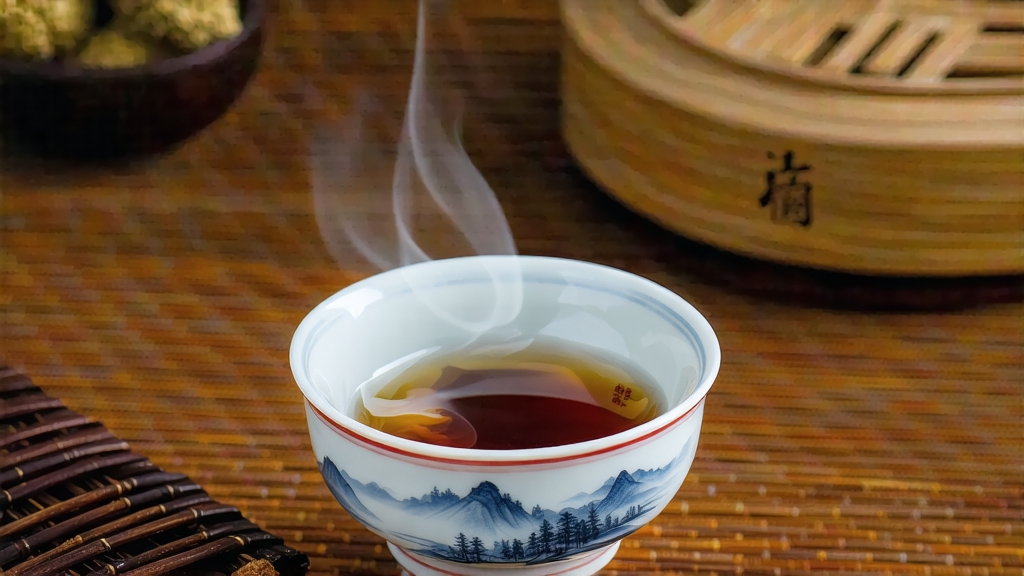
If green tea is the fresh-faced scholar of Chinese tea and pu-erh the bearded sage, then yellow tea is the quiet aristocrat who speaks in whispers only the patient can hear. Among the handful of authentic yellow teas still crafted in China, Meng Ding Huang Ya—literally “Yellow Bud from Meng Summit”—carries the most regal pedigree. It was first listed as a tribute during the Tang dynasty (618-907 CE) when caravans carried compressed bricks of it along the Tea-Horse Road; later, in the Ming, imperial edicts reserved every spring’s first picking for the palace in Beijing. Today the tea is grown on the same narrow ledges of Meng Ding Mountain, a Taoist sanctuary that rises 1 450 m above the Sichuan basin, where perennial cloud cover slows photosynthesis and concentrates amino acids in the tiny buds. The result is a liquor so softly sweet that local poets once compared it to “morning dew collected from a silkworm’s wings.”
What makes Meng Ding Huang Ya a yellow tea rather than a green one is the hushed, almost clandestine step known as men huang—“smother-yellowing.” After the buds are pan-fired at a gentle 80 °C to halt oxidation, they are wrapped in layers of silk paper or steamed rice straw and left to breathe in their own residual heat and humidity. Over two nights the leaf edges turn primrose, enzymes shift, and grassy edges melt into biscuity notes. The process is repeated three to five times, each cycle tightening the leaf structure until the buds feel like tiny golden quills. Finally the tea is charcoal-baked with lychee wood, a fuel chosen because its fragrant smoke never overpowers the delicate aromatics. In the cup the leaf unfurls slowly, as if reluctant to leave its mountain cradle, releasing a fragrance that hovers between fresh corn silk and steamed chestnut.
Western tea lovers often confuse yellow tea with lightly oxidised green oolong because both can show a buttery texture. The difference lies in the after-aroma: oolong lingers with floral lift, whereas Meng Ding Huang Ya settles into a warm cereal depth reminiscent of toasted millet. Professional cuppers evaluate it by “three listenings”: first listen to the dry leaf, shaking it in a pre-warmed gaiwan—rustling should sound crisp yet velvet; second listen to the liquor’s splash when decanted, measuring the high-pitched ring that indicates viscosity; third listen to the spent buds pressed against the lid, releasing a faint honey sigh. Color metrics target a liquor no darker than chrysanthemum liquor, holding a 20 % cloudiness that signals successful yellowing without bruising.
To brew Meng Ding Huang Ya Western-style, use 3 g per 250 ml of water at 85 °C and steep three minutes; however, the leaf truly sings under gongfu discipline. Begin by rinsing the buds for five seconds to awaken them—discard this rinse or sip it quietly, as mountain monks do, to taste the cloud. Follow with six infusions: 45 s, 40 s, 50 s, 65 s, 90 s, and 2 min, lowering the temperature by 2 °C each round to keep tannins asleep. A tall, thin-walled porcelain gaiwan maximizes vertical convection, coaxing the buds to stand upright like golden soldiers. The fifth infusion often surprises with a snap pea sweetness that appears nowhere on the earlier curve, proof that yellow tea ages in minutes rather than years.
Pairing food with Meng Ding Huang Ya demands restraint. Its umami coat magnifies the metallic edge of shellfish, so opt instead for steamed river fish dressed only with ginger threads, or Sichuan’s own “tofu brains” sprinkled with pickled mustard greens. Cheese is treacherous, yet a fresh chèvre rolled in lemon zest can echo its lactic top notes. For dessert, serve barely sweetened osmanthus jelly at cellar temperature; hot confections bully the tea’s whispered finish.
Storage rules invert those for green tea. Because the smother-yellowing step leaves residual moisture, seal the buds in a breathable kraft bag nested within a clay jar. Keep the jar in a cabinet that experiences a 5 °C diurnal swing; the micro-breathing continues, deepening honeyed tones for up to eighteen months. After that the color plateaus and the fragrance hollows—proof that even aristocrats must eventually bow to time.
When you finally sip Meng Ding Huang Ya, remember the Tang poet Lu Tong’s stanza: “Who says tea is